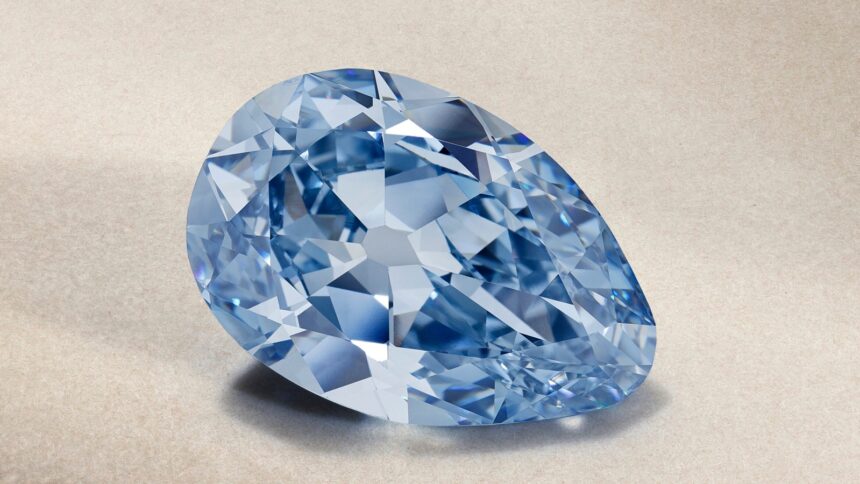Days before it was to come under the hammer at a Christie’s sale in Geneva on May 14, the Golconda Blue — the largest known vivid blue diamond, with Indian origins — has been withdrawn from the auction. Its owner has, reportedly, decided to sell it within the family.
The highlight of the Christie’s Magnificent Jewels sale, the 23.24 carat pear-shaped diamond, once belonged to Yeshwant Rao Holkar, the Maharaja of Indore. In 1923, his father had commissioned the French luxury jewellery house Chaumet to set it in a . In the ’30s, Yeshwant Rao appointed jewellery company Mauboussin to put it in a necklace with Indore Pears, a piece that was also worn by the Maharani of Indore for a portrait by French artist Bernard Boutet.
In the 1940s, American luxury jeweller Harry Winston purchased the diamond and reportedly set it with another 23-carat white diamond in a brooch and sold it to the then Maharaja of Baroda, from whom he bought it back and resold it to its current owner, who has now set it in a ring by jewellery designer Joel Arthur Rosenthal (known as “JAR”).
According to a release issued by Christie’s, “The diamonds begins with a reference found in a 4th-century Sanskrit manuscript. In 327 BC, Alexander the Great brought diamonds from India to Europe, sparking the West’s enduring fascination with these rare gems. By 1292 AD, Marco Polo famously chronicled the captivating beauty of Indian diamonds in his travel writings.
In the release, Rahul Kadakia, Christie’s International Head of Jewellery, states: “Exceptional noble gems of this calibre come to market once in a lifetime. Throughout its 259-year history, Christie’s has offered some of the world’s most important Golconda diamonds, including the Archduke Joseph, the Princie, and the Wittelsbach. With its royal heritage, extraordinary colour, and exceptional size, The Golconda Blue is truly one of the rarest blue diamonds in the world.”








